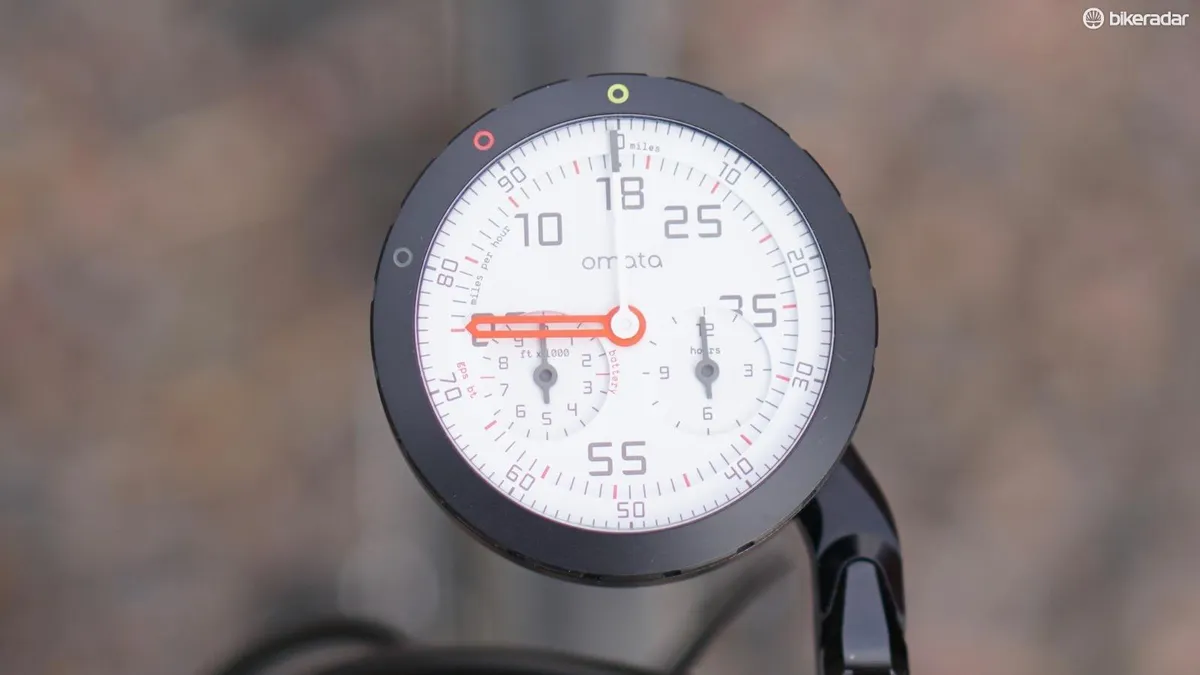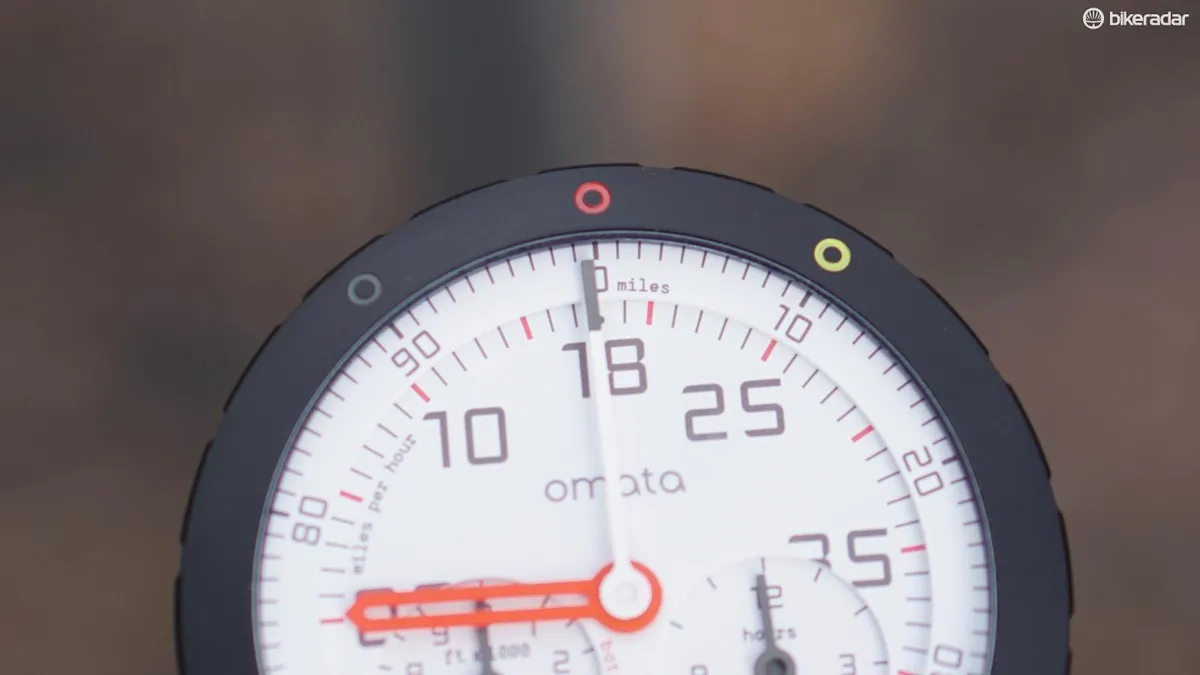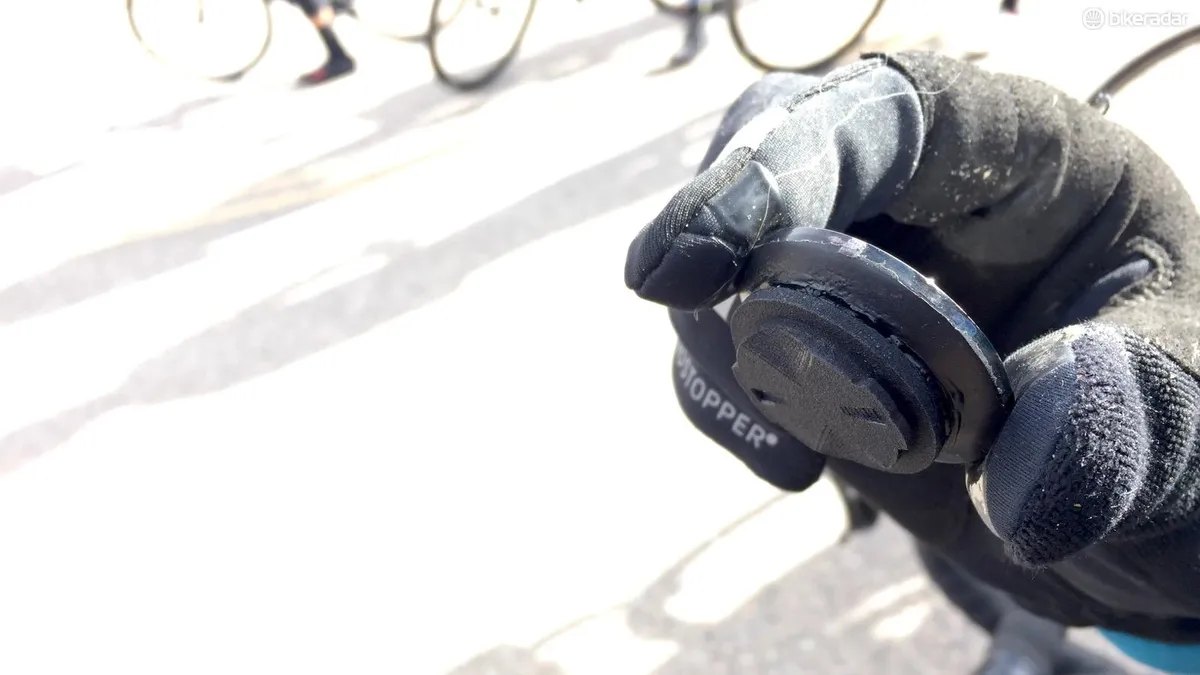The Omata computer is an electronic device that displays four metrics in analog form, like a classic watch. It’s a novel idea, but impractical.
The Omata creators claim the analog piece is an answer to modern cycling’s abundance of digital screens and data. Do we really need iPhone-sized computers on our handlebars with 97 metrics and incoming text notifications?
I get this argument. Many of us enjoy cycling for the escape it can provide. Staring at a screen can detract from appreciating the world around you. And yet… many of us want a GPS file for Strava, right?
Sure. But if ‘escape plus Strava file’ is what you are after, why not just use your phone with the free Strava app instead of paying $550 to put a computer on your handlebars?
Yes, at a claimed 17 hours, battery life is better than your phone. But you could buy a lightweight phone battery and still have $530 left.
Or, you could just put a cheap Garmin in your jersey pocket and enjoy the ride without fixating on the data.
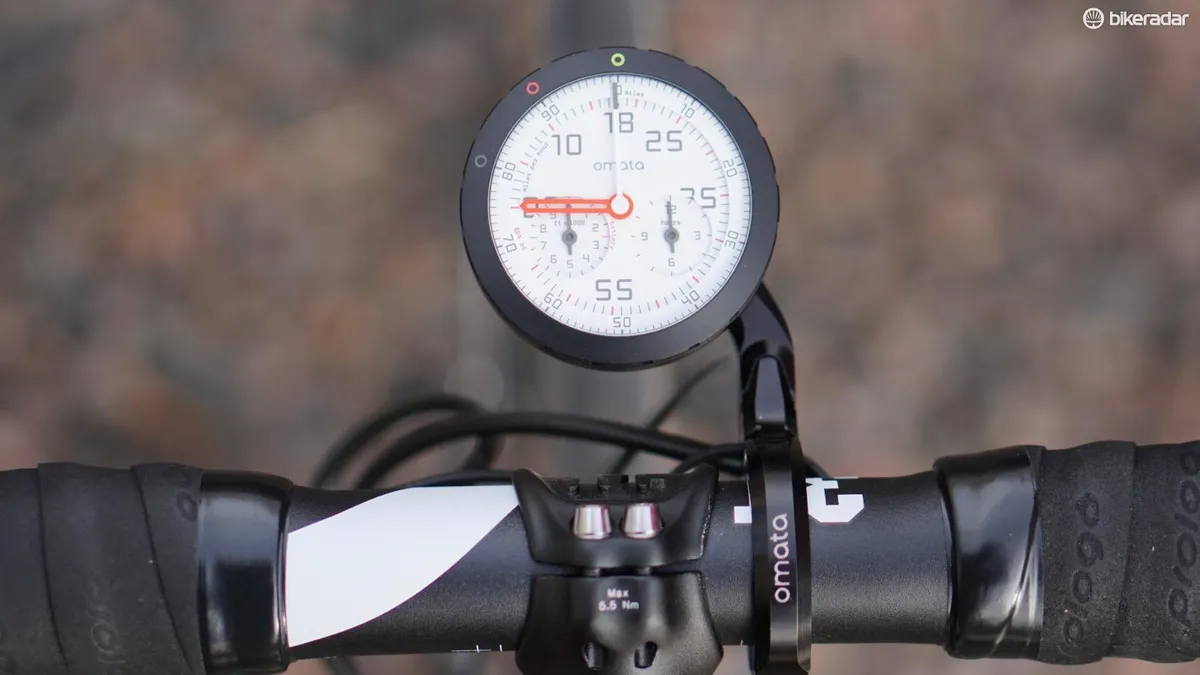
The Omata One works as advertised, measuring and displaying four metrics in analog. And the recorded file can be shared with Strava and elsewhere via the Omata app, which downloads the ride file from the computer.
The computer and the K-Edge mount both feel sturdy in hand. Compared to the current sea of plastic computers with gray screens, the One's face marks a distinct departure with a crisp white background and physical, moving hands. It is an elegant presentation.
As of January 2018, the app is still pretty basic, and ride downloads take a few minutes.
Simpler or more complicated?
The circular Omata has main dial hands for speed and distance, which are readable while riding. Two smaller dials for elapsed time and elevation gained are near-impossible to read while riding without bringing your face close to the computer.
The ring around the unit has three settings, which are inscrutable without reading the directions or watching a short YouTube tutorial. (The settings are Ride, Stop and Connect.) Most computers have a power button and a start/stop button and a visual indicator that you have a GPS signal.
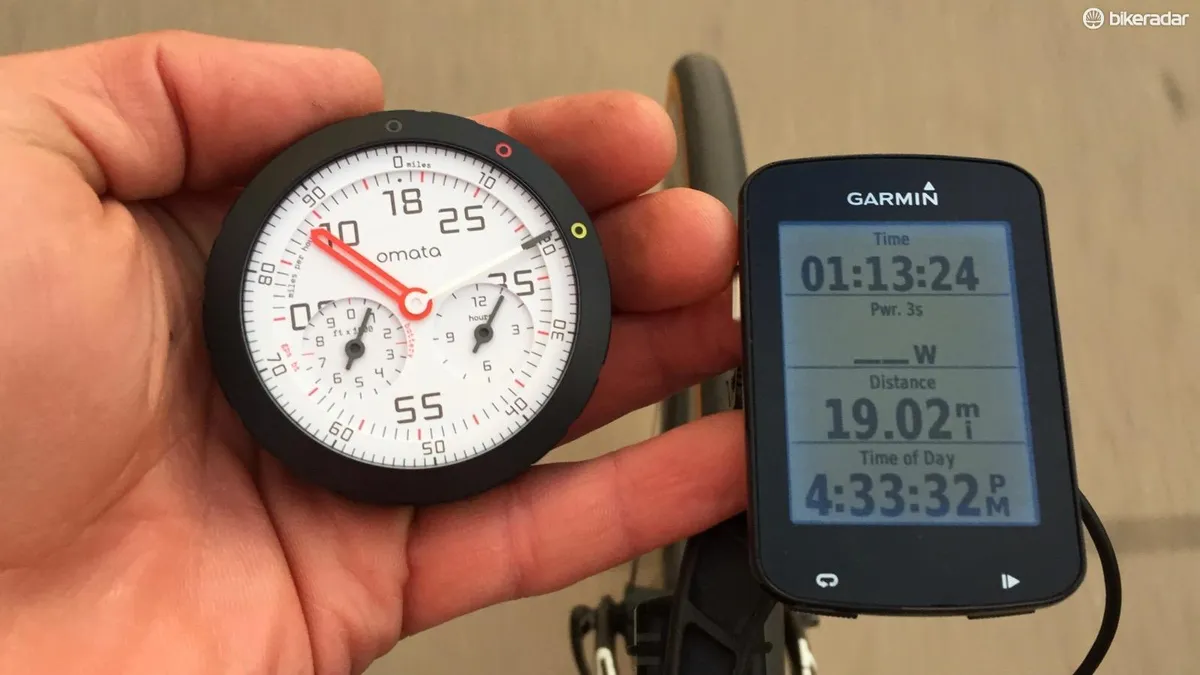
Like a standard GPS computer, the Omata has to find a satellite signal before it can start giving speed indication and record your ride file. When you turn the dial to the Ride setting, the speed-hand goes to a tiny ‘bt’ mark, then moves to a tiny ‘gps’ mark when the computer finds a signal.
Once you start riding, the large speed-hand bounces around showing your speed.
Obviously, there is no navigation assistance, but the Omata is also missing basic things such as the time of day. This watch-looking device is not, in fact, a watch.
So what, exactly, is the point of this GPS computer? It looks cool. That’s it.
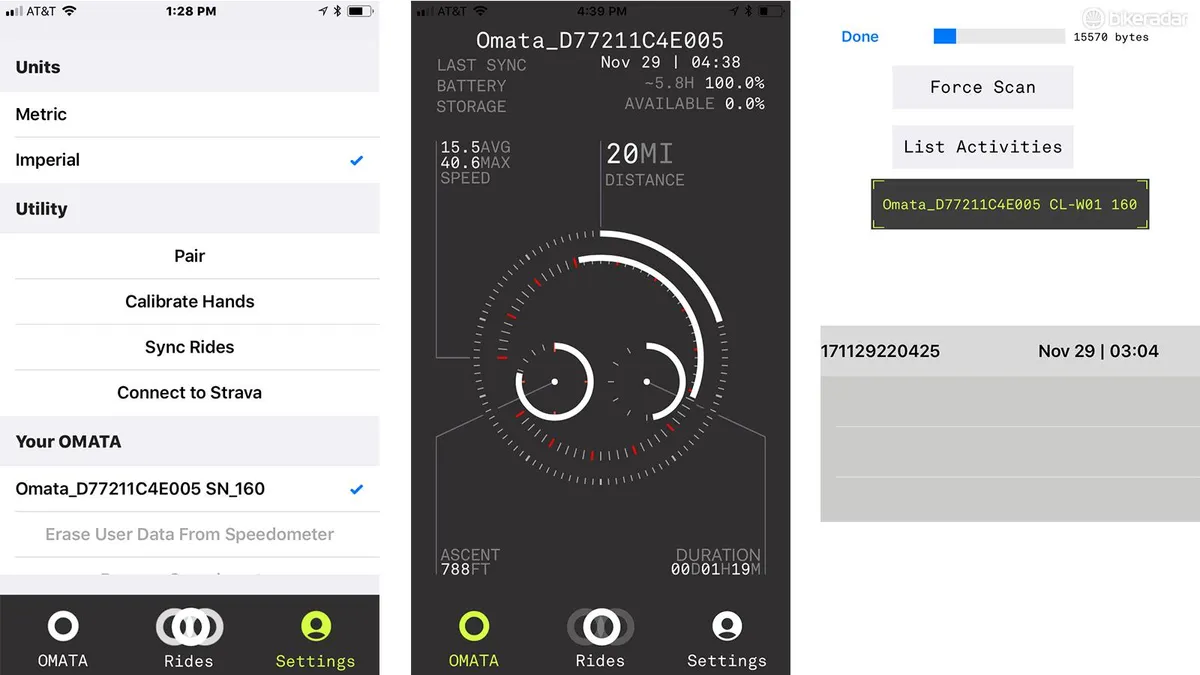
The Omata’s functionality is far inferior to bargain computers such as a Lezyne Mini ($99 / £70), a Garmin 20 ($129 / £109) or, again, a free app from Strava or Wahoo or others. If you want to reduce digital clutter while capturing data, you have much more economical yet more robust options.
On the other hand, there is no other analog cycling computer like the Omata One.
Omata One verdict
The Omata looks cool, and the analog display is novel. But the information recorded is basic, the small displays are hard to read and, considering all this, the price is very high.
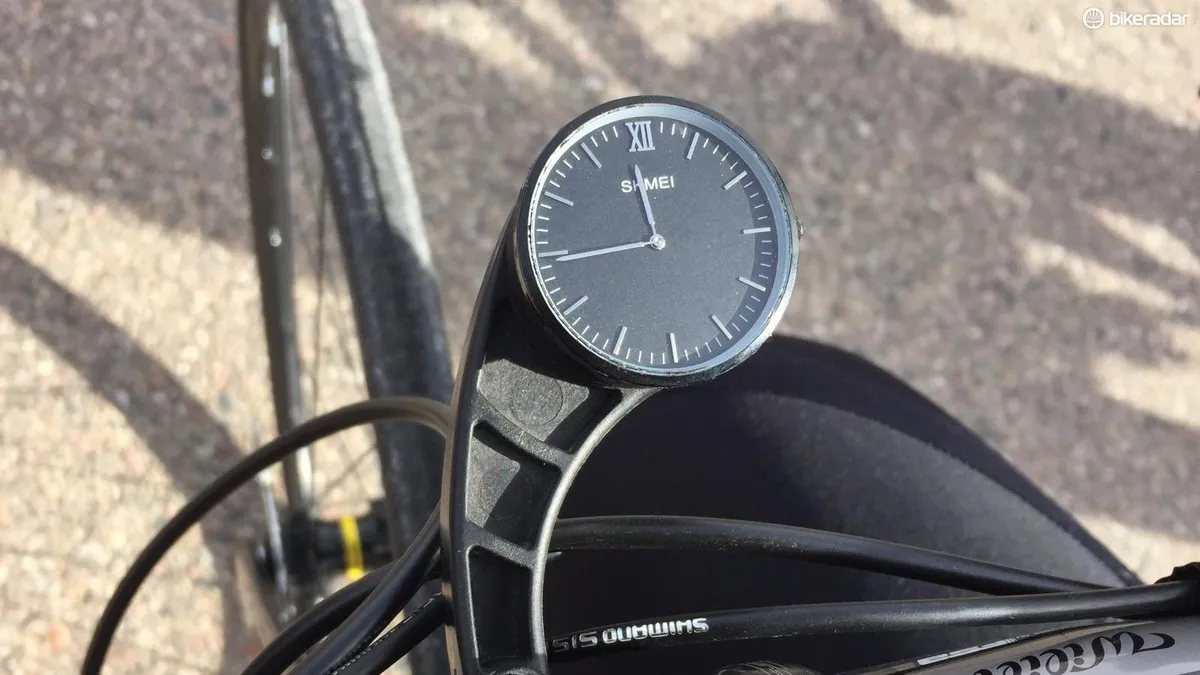
Omata One features
- GPS-based speed, distance, elevation
- Bluetooth connection to app for ride upload
- Large dial displays for speed and distance
- Small dial displays for elapsed time and gained elevation
